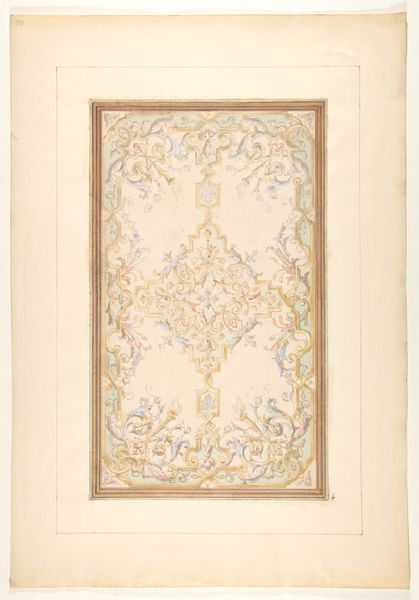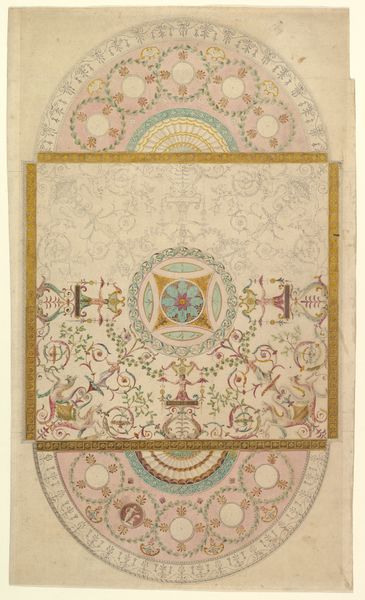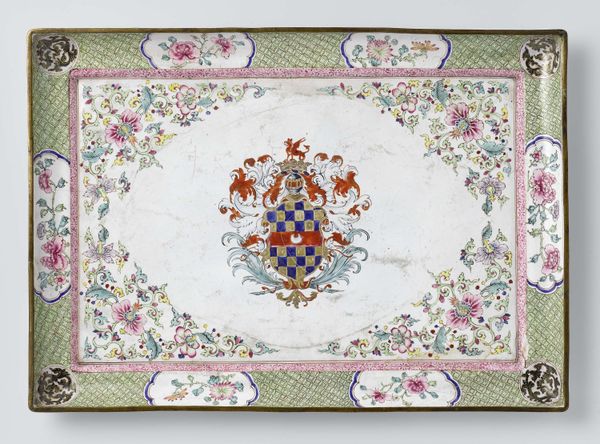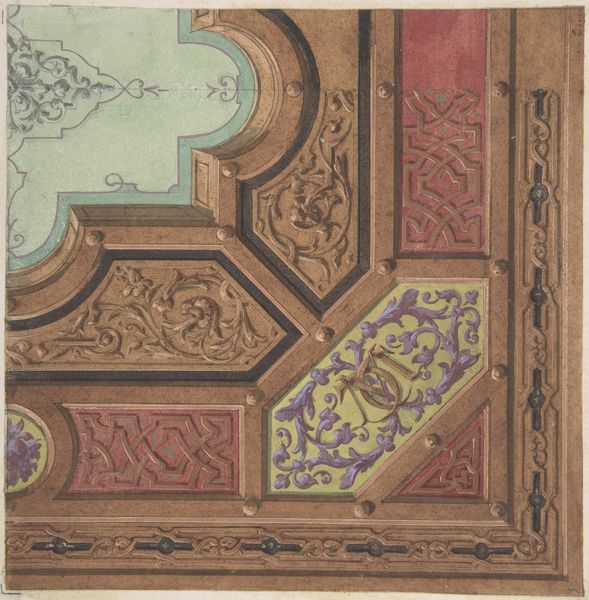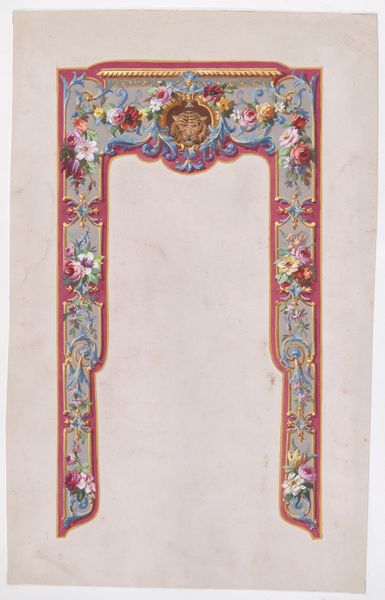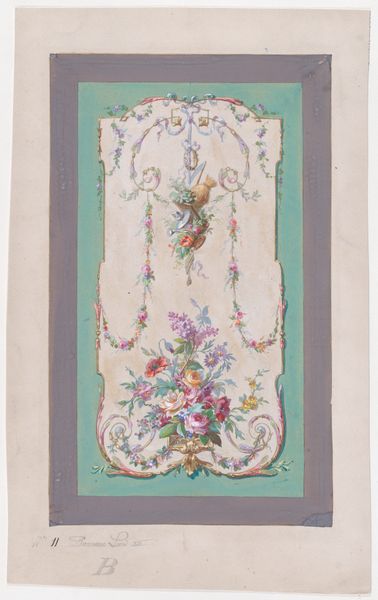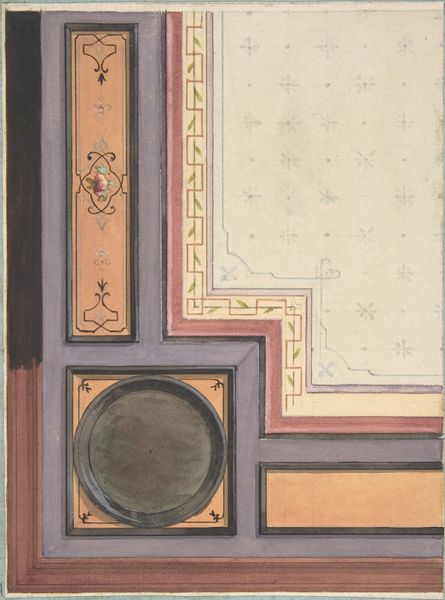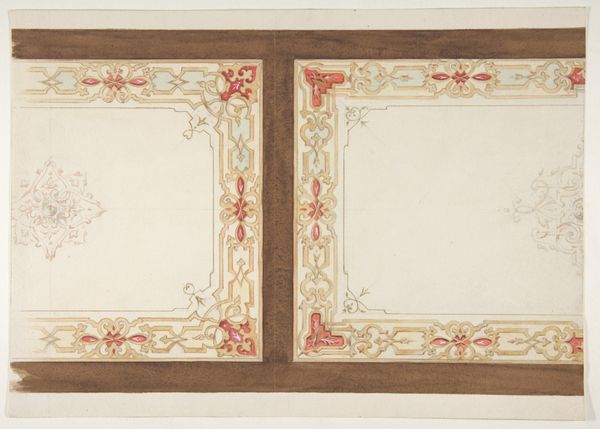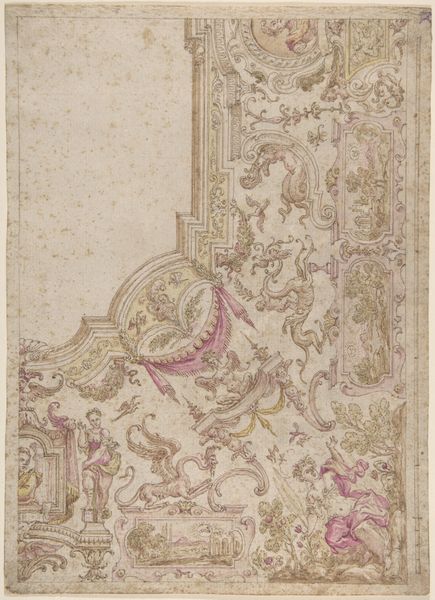
Design for a paneled ceiling to be painted in grotesque motifs 1820 - 1897
0:00
0:00
drawing, print, watercolor, mural, architecture
#
drawing
#
allegory
# print
#
form
#
11_renaissance
#
watercolor
#
geometric
#
line
#
decorative-art
#
mural
#
watercolor
#
architecture
Copyright: Public Domain
Editor: So, here we have "Design for a paneled ceiling to be painted in grotesque motifs" dating from 1820 to 1897, by Jules-Edmond-Charles Lachaise, currently at the Metropolitan Museum of Art. It’s a watercolor drawing and print, a design for architecture... it's fascinating how both geometric forms and decorative-art styles intertwine. It’s incomplete, offering a glimpse into the artist’s process. How do you interpret this work? Curator: The "grotesque motifs" are actually quite telling. When we see these kinds of fantastical, often floral and animalistic designs, we're tapping into a tradition that goes all the way back to ancient Rome. Discovered during the Renaissance in buried ruins (grotte, in Italian, hence "grotesque"), these motifs became wildly popular as symbols of rebirth, playfulness, and even a bit of the uncanny. Do you notice the deliberate juxtaposition here between the controlled geometric paneling and the wilder, more imaginative painted section? Editor: Yes, I see the sharp lines of the unpainted section against the lively colors and organic shapes. What does that contrast mean? Curator: The artist creates a space where rationality and imagination collide. It suggests that even within the most structured environments, there's room for fantasy and the unexpected. The use of allegory is strong here. Look at the small vignettes embedded within the design. What stories do they tell you? What memories might they evoke? Editor: I notice the figures in the central painted section – are they classical figures, perhaps muses or deities? The whole design feels like it's hinting at grand narratives. Curator: Precisely! This artwork serves as a reminder of how symbols endure. We inherit imagery and continually re-interpret them based on our own experiences and cultural understanding. It really gives you a new perspective, doesn't it? Editor: Absolutely. I hadn't thought about the enduring nature of symbols in this way. Now I am considering this design in its full cultural and historical context! Thank you.
Comments
No comments
Be the first to comment and join the conversation on the ultimate creative platform.

